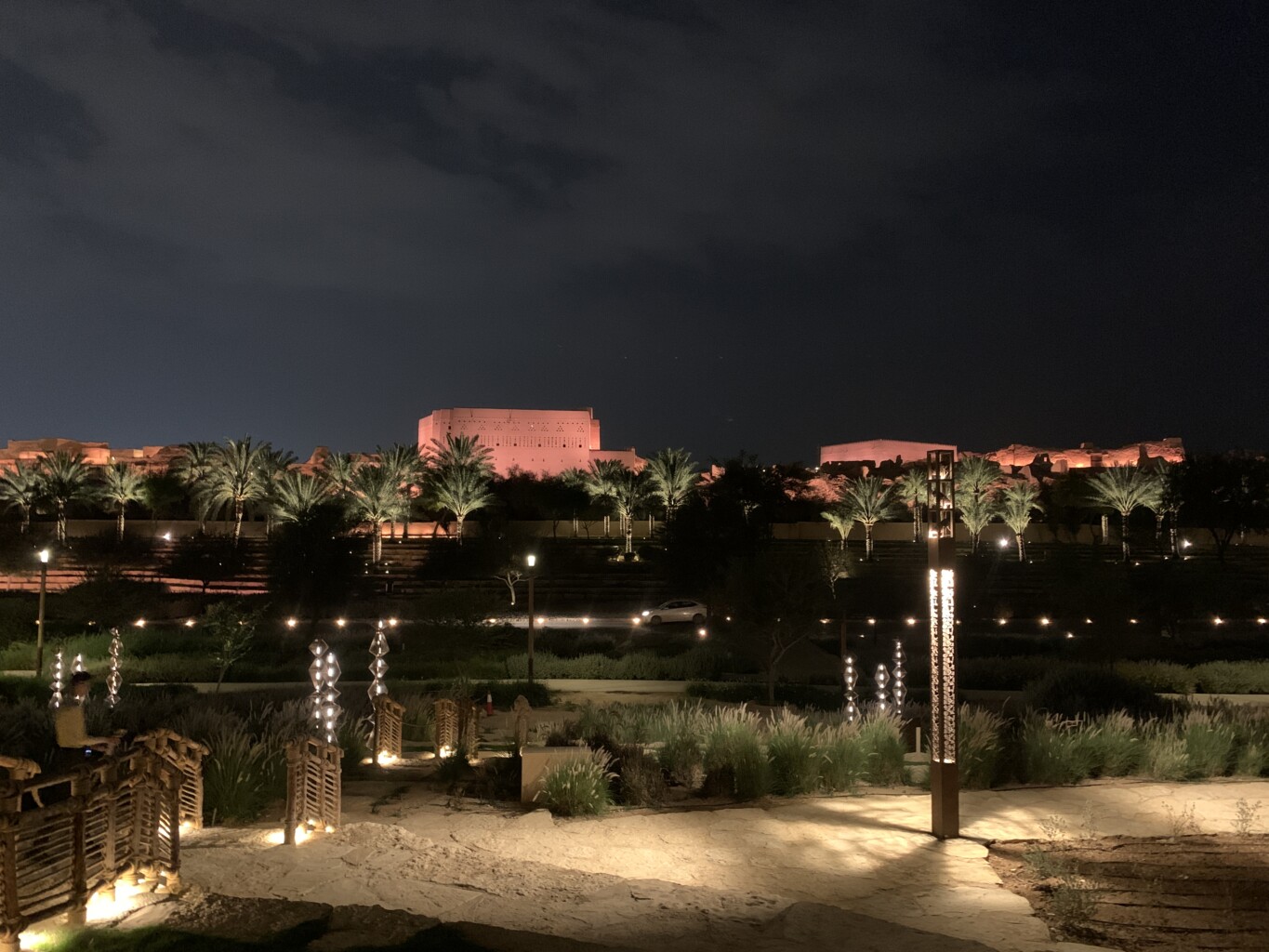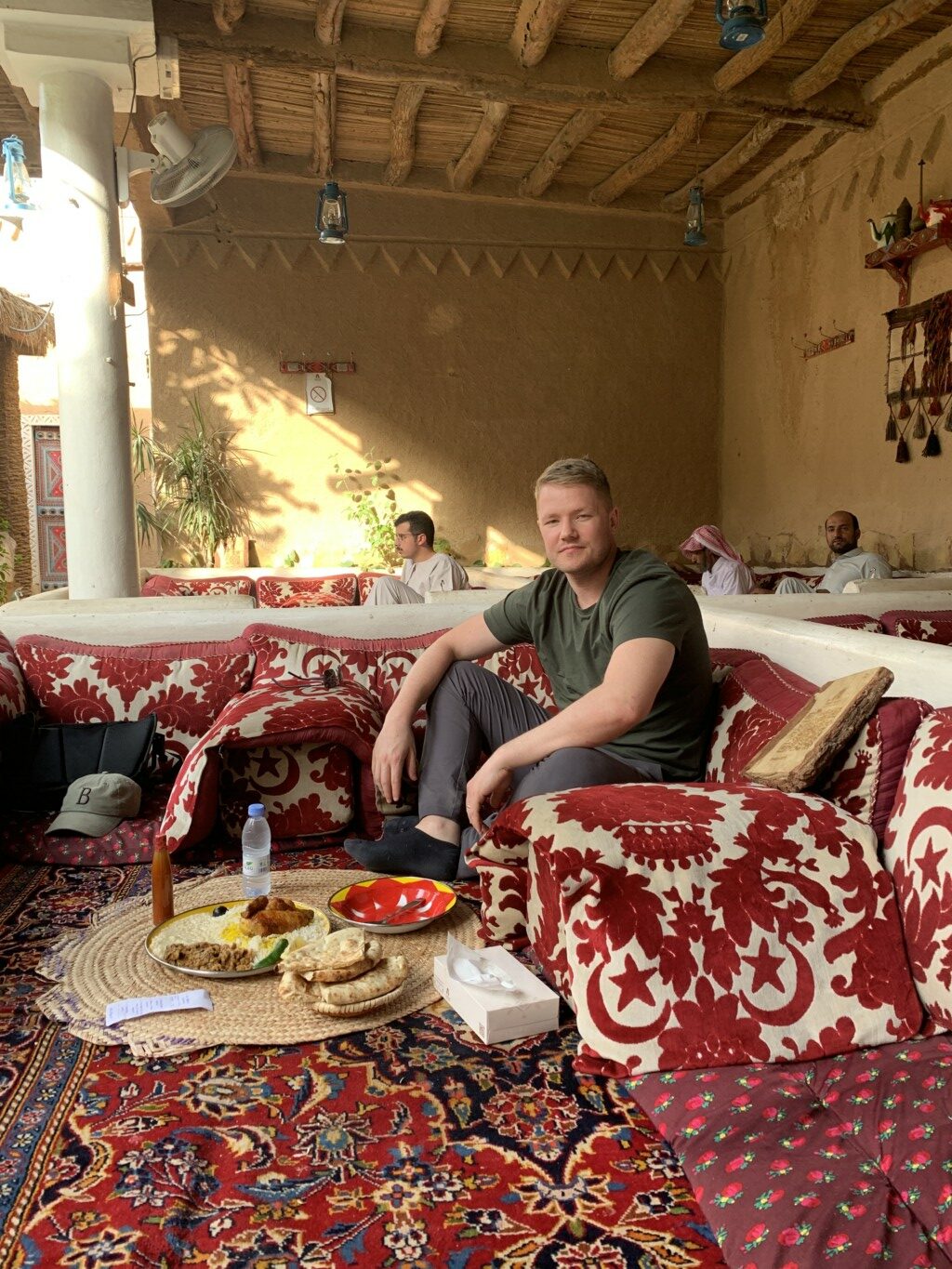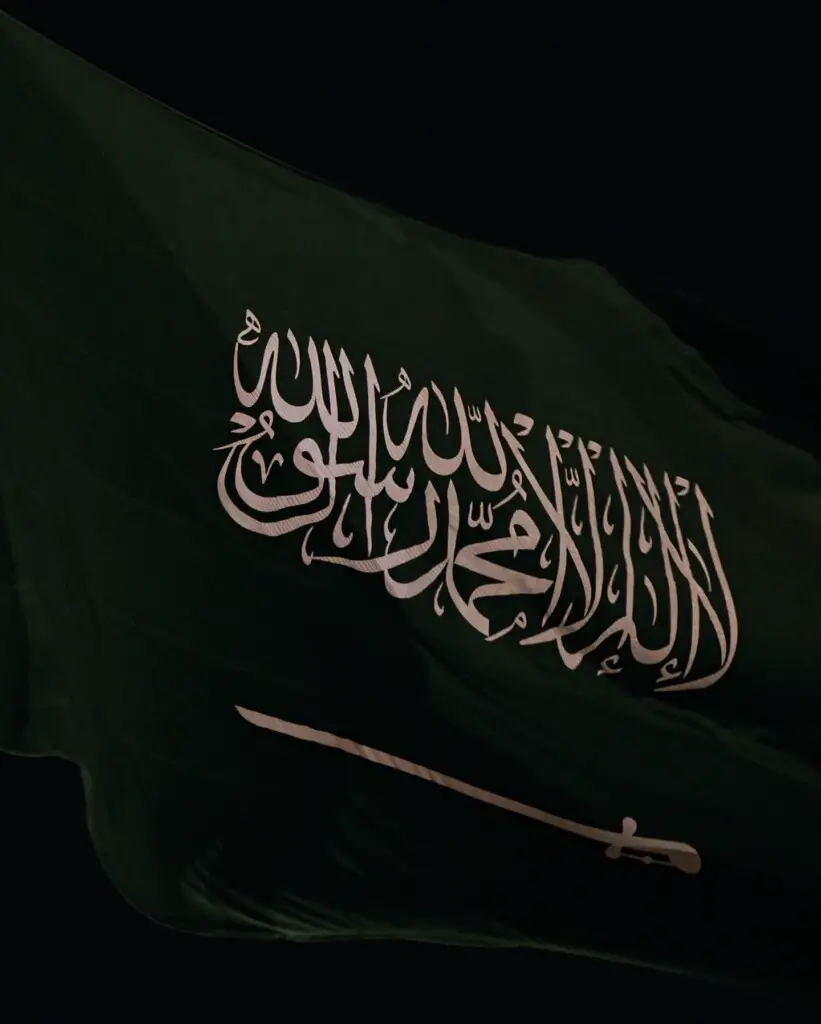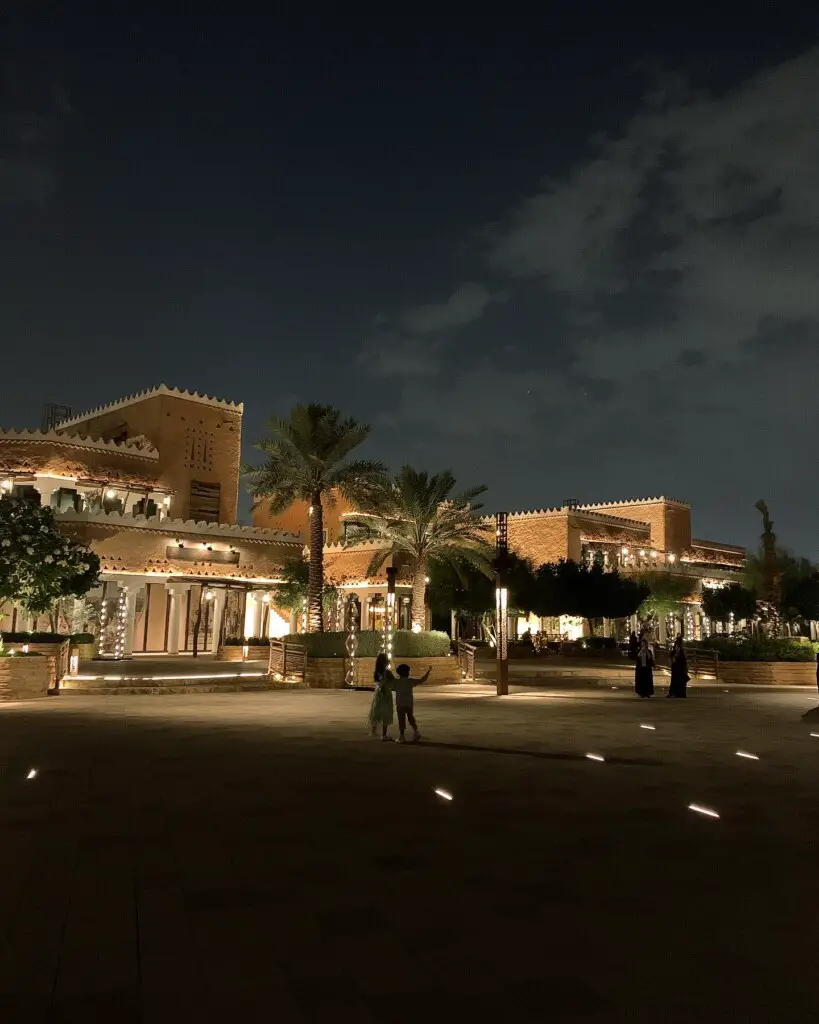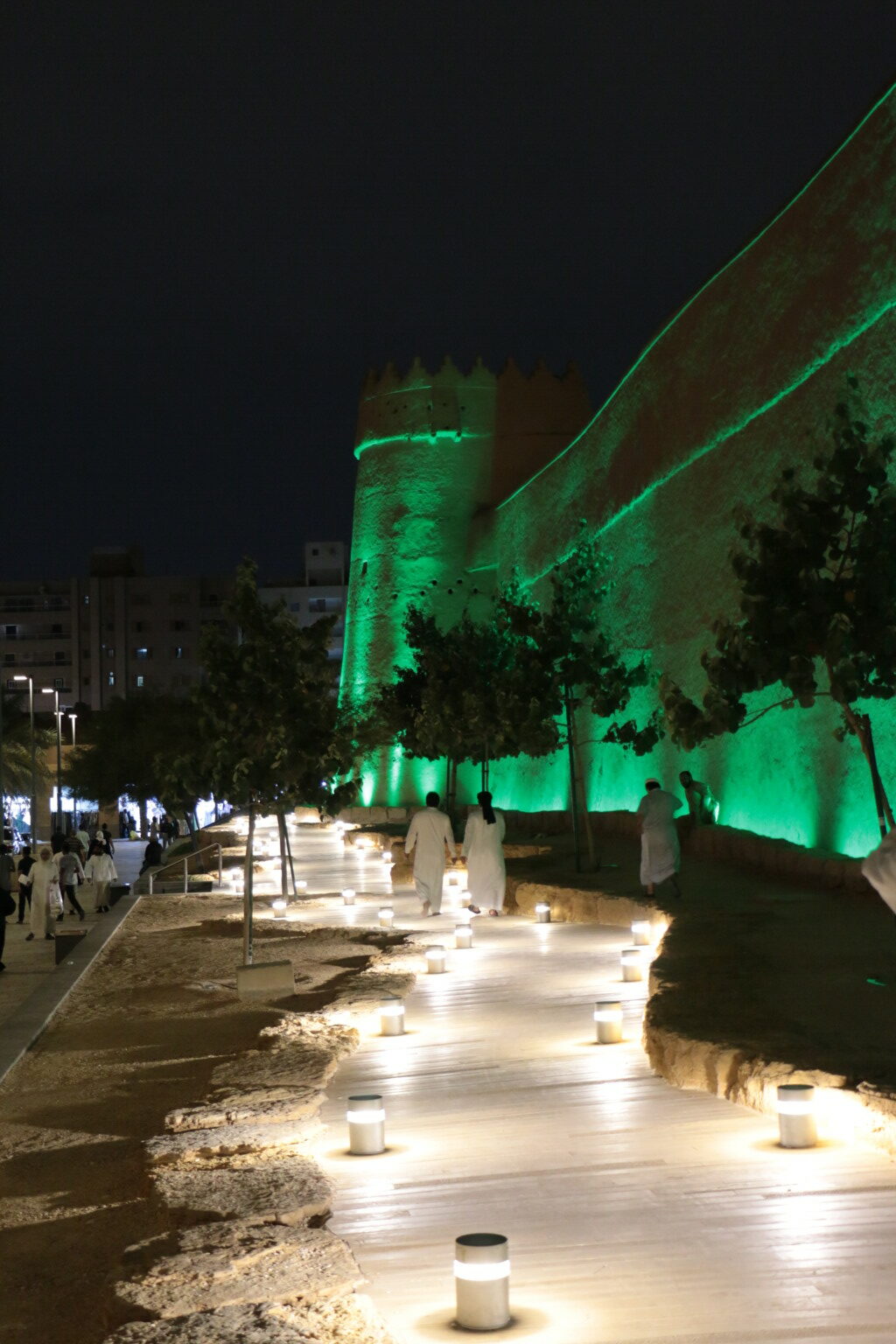Saudi Arabia – Travel Guide
Please note that some of the links on our website are affiliate links. This means if you click on these links and make a purchase, we may receive a small commission at no extra cost to you. These commissions help us maintain and grow our blog.
Saudi Arabia is a destination that has historically been off the radar for most non-Muslim travelers. However, this is about to change as the Saudi government embarks on significant investments under its Vision 2030 initiative. This ambitious plan aims to diversify the country’s income streams beyond oil and establish Saudi Arabia as a prominent tourism destination.
As part of this new vision, the government introduced an e-visa in 2019, allowing foreign visitors to explore the country for tourism purposes, whereas previously, entry was mostly limited to business and pilgrimage trips. Intrigued by this opportunity, I decided to visit Saudi Arabia—and what a journey it turned out to be (both positive and negative)! If you’re curious about my personal experience, be sure to check out my detailed article on the trip.
In this travel guide, I’ll give you all the essential background knowledge you need before booking your ticket to Saudi Arabia.

A Brief Lesson on Saudi Arabia’s History
Saudi Arabia’s history is deeply rooted in ancient civilizations, the rise of Islam, and its pivotal role as the birthplace of the Arab world. The Arabian Peninsula has witnessed the rise and fall of powerful empires, the spread of one of the world’s major religions, and the transformation into a modern nation-state that plays a crucial role on the global stage.
Ancient Civilizations
The Arabian Peninsula has been inhabited for thousands of years, with evidence of human settlement dating back to prehistoric times. The early inhabitants of the region were primarily nomadic tribes who adapted to the harsh desert environment. Over time, these tribes established trade routes and small settlements, laying the foundation for more complex societies.
One of the most notable ancient civilizations in the region was the Nabataeans, who flourished around the 4th century BCE to the 2nd century CE. The Nabataeans were renowned for their advanced engineering and architectural skills, most famously demonstrated in the rock-hewn city of Madain Salih (Al-Hijr). This city, which is about 1 900 years old, now a UNESCO World Heritage site, served as a crucial hub in the ancient incense trade route, connecting the Mediterranean world with Arabia, East Africa, and India. The Nabataeans controlled the trade of frankincense and myrrh, two highly prized commodities in the ancient world, and their influence extended across the region.

The Rise of Islam
The 7th century marked a turning point in the history of the Arabian Peninsula with the rise of Islam. The Prophet Muhammad, born in Mecca in 570 CE, began receiving revelations that would form the basis of Islam, a monotheistic religion that rapidly spread across the region and beyond.
Mecca and Medina became the spiritual centers of Islam. Mecca, home to the Kaaba, a cube-like structure surrounded by the Grand Mosque (Masjid al-Haram) in Mecca a sacred site of pilgrimage even before Islam, became the focal point of the Muslim world after the Prophet Muhammad established it as the direction (qibla) for prayer. While the Kaaba is said to have been built by the Prophet Ibrahim and his son Ismail, the Grand Mosque surrounding it is said to have been built by the Prophet Muhammed. The Grand Mosque in Mecca is also known as the world most expensive building, which is frequently being expanded by the Saudi government. The Prophet Muhammeds migration (Hijra) to Medina in 622 CE marks the beginning of the Islamic calendar and the establishment of the first Muslim community.
The Arabian Peninsula, under the leadership of Muhammad and his successors, quickly unified under the banner of Islam, leading to the rapid expansion of the Islamic Caliphate. This expansion spread Islamic culture, language, and religion across vast territories, from North Africa and Spain in the west to Persia and the Indian subcontinent in the east.
The period following the death of the Prophet Muhammad saw the Arabian Peninsula become a central part of the Islamic world. The region’s cities, especially Mecca and Medina, remained vital centers of learning, culture, and pilgrimage, with millions of Muslims traveling there annually for the Hajj pilgrimage, one of the Five Pillars of Islam.
The Emergence of the Saudi State
The modern Kingdom of Saudi Arabia traces its origins to the mid-18th century, when Muhammad ibn Saud, the leader of the small town of Diriyah (a UNESCO World Heritage site near Riyadh), formed an alliance with the Islamic reformer Muhammad ibn Abd al-Wahhab. This alliance, rooted in Wahhabism—a strict interpretation of Sunni Islam that emphasizes returning to the original teachings of the Quran—laid the foundation for the first Saudi state.
The first Saudi state, established in 1744, rapidly expanded its territory, but it was eventually destroyed by the Ottoman Empire in 1818. The second Saudi state was re-established in 1824 but was plagued by internal disputes and external threats, leading to its decline by the late 19th century.
The modern Kingdom of Saudi Arabia was founded in 1932 by King Abdulaziz Al Saud (also known as Ibn Saud), who successfully unified the disparate regions of the Arabian Peninsula, including the Hejaz, Najd, and Eastern Province, under his rule. His leadership was marked by both diplomatic and military prowess, and his efforts laid the groundwork for the modern Saudi state.
For much of its modern history, Saudi Arabia enforced strict social and religious norms. Women were required to adhere to a conservative dress code, and their participation in public life was heavily restricted. For instance, women were not allowed to drive cars, and their ability to work or travel required the permission of a male guardian. Public entertainment, such as concerts and cinemas, was also banned, reflecting the conservative interpretation of Islam that dominated the kingdom.

The Discovery of Oil and Modernization
The discovery of oil in the Eastern Province in 1938 transformed Saudi Arabia’s economy and global standing. The vast reserves of petroleum turned the kingdom into one of the world’s leading oil producers and exporters, providing the financial resources necessary for rapid modernization and development. The revenues from oil allowed Saudi Arabia to invest in infrastructure, education, healthcare, and defense, propelling the country into the modern era.
During the mid-20th century, Saudi Arabia became a key ally of Western powers, particularly the United States, with whom it developed a close relationship centered around energy security and regional stability. The kingdom also played a leading role in the formation of the Organization of the Petroleum Exporting Countries (OPEC), which has had a profound influence on global oil markets.
Cultural Renaissance and Vision 2030
In the 21st century, Saudi Arabia is undergoing a significant cultural and social transformation as part of its Vision 2030 initiative, spearheaded by Crown Prince Mohammed bin Salman. This ambitious plan aims to diversify the economy away from oil dependency by developing sectors such as tourism, entertainment, and technology, while also promoting cultural openness and social reforms.
The Vision 2030 initiative has led to unprecedented changes in Saudi society, including the easing of social restrictions, the promotion of cultural and entertainment events, and the expansion of women’s rights, such as the right to drive and increased participation in the workforce. The country is also investing heavily in mega-projects like NEOM, a futuristic city envisioned as a hub for innovation and sustainability.
After basically being a closed country to tourism for much of its history, the Saudi government decided in 2019 to open up its doors to international tourists by issuing an e-visa. These developments reflect the kingdom’s desire to present a new image to the world and to play a more active role in the global community.

What Makes Saudi Arabia Unique
- Holy Cities of Mecca and Medina: Saudi Arabia is home to Islam’s two holiest cities, Mecca and Medina, which hold significant religious and cultural importance within the Islamic world. While Mecca is only accessible to Muslim, non-muslims can visit Medina with the exception for Prophet’s Mosque.
- Diverse Landscapes: From the vast deserts of the Rub’ al Khali (Empty Quarter) to the lush mountains of Asir, Saudi Arabia does not only consist of desert as one might think. The Red Sea coastline also offers pristine beaches and world-class diving sites.
- It’s authentic: While the UAE and Qatar might feel polished and modern with their brand-new malls and contemporary architecture, Saudi Arabia offers a more authentic and immersive experience. The country’s rich cultural heritage is evident in its ancient archaeological sites, vibrant traditional souks, and Bedouin traditions. The Al-Ula region, with its stunning rock formations and historical landmarks, is also a testament to the kingdom’s deep and storied history. And the best part? You can explore these treasures without millions of other tourists!
- Hospitality: Known for their warm hospitality, Saudis welcome visitors with a deep sense of respect and generosity. The concept of “Diyafa” (hospitality) is central to Saudi culture. Also, you won’t be bothered by people trying to sell you any unnecessary souvenir, you can with ease wonder around the traditional Souk of Riyadh without being harrassed.

Top Things to Do
Riyadh
Explore Riyadh, the capital of Saudi Arabia, a massive city with endless shopping malls and where new construction seems to be going on almost everywhere. Start with a visit to the historic Masmak Fortress, the site of the kingdom’s unification, and the National Museum, which offers a comprehensive overview of Saudi Arabia’s history and culture. Also, near the Masmak Fortress lies Souk Al-Zal which will give you an authentic Arabian shopping experience! Don’t miss the towering Kingdom Centre, offering panoramic views of the city, and Al Diriyah, the original home of the Saudi royal family, now a UNESCO World Heritage site.
Also, venture out to the Edge of the World, a breathtaking escarpment located northwest of Riyadh. Renowned for its stunning views over the expansive desert below, it’s a popular destination for hiking, picnicking, and experiencing a more natural side of Saudi Arabia, far removed from the modern shopping malls and sprawling cities. If you are looking for a complete list of things to do in Riyadh, check out my blog post about it here.
Mecca and Medina
Although the holy city of Mecca is only open for Muslim travelers, Medina except for the Prophets Mosque, is open to non-muslim travellers. Mecca is home to the Kaaba in the Masjid al-Haram (also known as the Sacred Mosque), the holiest site in Islam, while Medina houses the Prophet’s Mosque, where Prophet Muhammad is buried. These cities are the heart of the Islamic world, hosting millions of pilgrims during Hajj and Umrah.
Al-Ula and Madain Salih
Discover the ancient Nabataean city of Madain Salih (Al-Hijr), a UNESCO World Heritage site known for its rock-cut tombs and stunning desert landscapes. Nearby Al-Ula is a hub of historical and natural wonders, featuring ancient rock art, archaeological sites, and the iconic Elephant Rock.
Jeddah
Experience the coastal city of Jeddah, Saudi Arabia’s gateway to the Red Sea. The Jeddah Corniche, is a beautiful and developed waterfront promenade that comes to life at night when the sun has set. Also explore the historic Al-Balad district, a UNESCO World Heritage site known for its traditional coral-built houses. Explore my blog post on the best things to do in Jeddah for a comprehensive guide to all the must-see attractions and experiences.
Asir National Park
Explore the lush landscapes of Asir National Park in the southwestern region of Saudi Arabia. The park is home to Jebel Sawda, the highest peak in Saudi Arabia, and offers opportunities for hiking, birdwatching, and experiencing the traditional culture of the Asiri people. The nearby city of Abha is known for its cooler climate (compared to the scorching heat the rest of the country), vibrant markets, and colorful architecture.
The Red Sea Coast
I, personally love the Red Sea for its stunning marine life and crystal-clear waters and Saudi Arabia has a 2 000 km long coastline of it! Although tourism along the country’s coastline is still in its infancy, the government’s Red Sea Project, an ambitious luxury tourism development, is set to make this region even more accessible and appealing to international travelers. Currently, popular diving spots include Yanbu and Farasan Islands which offer world-class diving and snorkeling experiences. If you are looking to relax at the beach, some new resorts have been built, located about an hour from Jeddah city center.
Rub’ al Khali (Empty Quarter)
The Rub’ al Khali (a.k.a the empty quarter), is the largest continuous sand desert in the world, known for its vast, untouched dunes and stunning desert landscapes. You can experience the solitude of the desert on a guided safari, where you can camp under the stars, explore hidden oases, and learn about the Bedouin way of life.
Al Ahsa Oasis
The Al Ahsa Oasis, is one of the largest natural oases in the world and a UNESCO World Heritage site! Located in the Eastern Province, Al Ahsa is known for its lush palm groves, ancient archaeological sites, and traditional markets. Visit the historic Qasr Ibrahim fortress and the stunning Al-Qarah Mountain with its unique rock formations.

Travel Costs
Overall, I would classify Saudi Arabia as a relatively expensive destination for travelers. The tourism infrastructure is still in its early stages of development across much of the country, though this is likely to improve over the next 5-10 years. Most accommodation options cater to the upscale segment, with luxury hotels and high-end resorts being prevalent. While budget and mid-range accommodations do exist, I found that they often fall short in terms of value for money.
Accommodation
Budget accommodation can be challenging to find, but a few hostels in the major cities of Riyadh and Jeddah offer options in the 150-300 SAR range (more details below). These typically include a bunk bed in a shared dormitory, with shared bathroom facilities, air conditioning, and Wi-Fi. Mid-range hotels generally cost around 400-500 SAR per night, though they often offer little beyond a spacious room and a private bathroom—breakfast is usually not included.
When it comes to luxury and upscale accommodations, the options seem limitless. Virtually all major luxury hotel chains, such as Four Seasons, Ritz Carlton, Hyatt, and others, have a presence in both Riyadh and Jeddah (remarkably, we don’t even have one of these hotels in all of Sweden!). Prices typically start at 800+ SAR per night and include extensive facilities, personalized services, and every imaginable amenity. There are even rumors that some hotels discreetly serve alcohol, despite it being prohibited throughout Saudi Arabia.
Food
Eating out in Saudi Arabia can vary widely in cost. Budget options like local eateries and street food typically cost around 20-50 SAR per meal, offering traditional dishes like shawarma and falafel. Mid-range dining, where you can enjoy a sit-down meal in a restaurant, ranges from 80-200 SAR per meal. Fine dining experiences in upscale restaurants can cost 300+ SAR per person.
Transportation
One of the most frustrating aspects of traveling in Saudi Arabia is the lack of public transportation options. With the exception of a public bus system in Riyadh, which doesn’t cover all areas and is slowed down by heavy traffic, public transit is virtually nonexistent across the country. For those staying in Saudi Arabia for more than just a few days, renting a car is highly recommended. The country is designed for driving, and getting around without a car can be challenging.
If you’re expecting to walk around cities as easily as you might in Europe, think again. Streets often lack crosswalks, and even when they are present, drivers rarely stop to let pedestrians cross. If you’re not interested in driving yourself, your only other option is to take a taxi. While fares are relatively inexpensive compared to Europe, costs can add up quickly. Gas prices are about half of what they are in the West, and renting a car costs around 150 SAR per day.
For taxis, it’s best to use Careem (the Middle Eastern version of Uber) or Uber to get the best rates, especially when traveling to and from the airports in Jeddah and Riyadh. Be cautious of local drivers who may try to overcharge arriving tourists for a taxi into town.
Activities
Since tourism is still in its early stages in Saudi Arabia, don’t expect a wide array of tourist attractions. While there are some museums in Jeddah and Riyadh, as well as the newly built Boulevard City in the capital, the number of sights is limited compared to more established tourist destinations. For detailed recommendations on what to do in each city, check out my guides on Jeddah and Riyadh.
Museum entry fees typically range around 50 SAR, while visiting Boulevard City in Riyadh is free of charge. A visit to Diriyah, the historic birthplace of Saudi Arabia, also costs around 50 SAR, which can be spent on dining at one of the many restaurants on Bujairi Terrace. If you’re interested in taking a tour to the popular Edge of the World outside of Riyadh, expect to pay around 350 SAR for a group tour or approximately 1400 SAR for a private tour.
This overview helps you plan your budget and make the most of your trip to Saudi Arabia, taking into account seasonal variations and different spending preferences.
| Expense | Budget | Mid-Range | Luxury |
|---|---|---|---|
| Accommodation | 150-300 SAR (Budget Hotels) | 400-800 SAR (Mid-Range Hotels) | 800+ SAR (Luxury Hotels) |
| Food | 20-50 SAR (Local Cafes) | 80-200 SAR (Mid-Range Restaurants) | 300+ SAR (Fine Dining) |
| Transportation | 4-20 SAR (Public Transport in Riyadh) | 150-300 SAR (Car Rental) | 500+ SAR (Private Transfers) |
| Activities | 50 SAR (Museums) | 350 SAR (Tours) | 1400+ SAR (Private Tours) |

Places To Stay
Riyadh
Below you will find some hotel recommendations depending on your budget. If you are wondering in which area to stay in Riyadh, I would recommend that you stay in the Al Olaya district, here you will be located smack bang in the center of the city and also in between the main tourist sights in the capital.
- Luxury:
- The Four Season Riyadh: The well-known four-season hotel chain, is located inside the Kingdom Tower in the Al Olaya district. The rooms are opulent, and the hotel also features a spa, pool and multiple dining options.
- Mandarin Oriental Al Faisaliah: A luxury hotel also located in the Al Olaya district, the heart of Riyadh inside the Al Faisaliah Tower (another excellent view point), The hotel offers elegant rooms, exceptional service and great dining options such as the Globe restaurant.
- Mid-Range:
- Ibis Riyadh Olaya Street: One of the more price-worthy options, with clean rooms and a convenient location
- Holiday Inn Riyadh – Izdihar: A reliable mid-range option with good amenities and easy access to major attractions.
- Budget:
- Sands Inn Hostel: One of the most centrally located hostels in Riyadh, only a stones throw away from the Al Olaya district. It has separate dormitories for male and female.
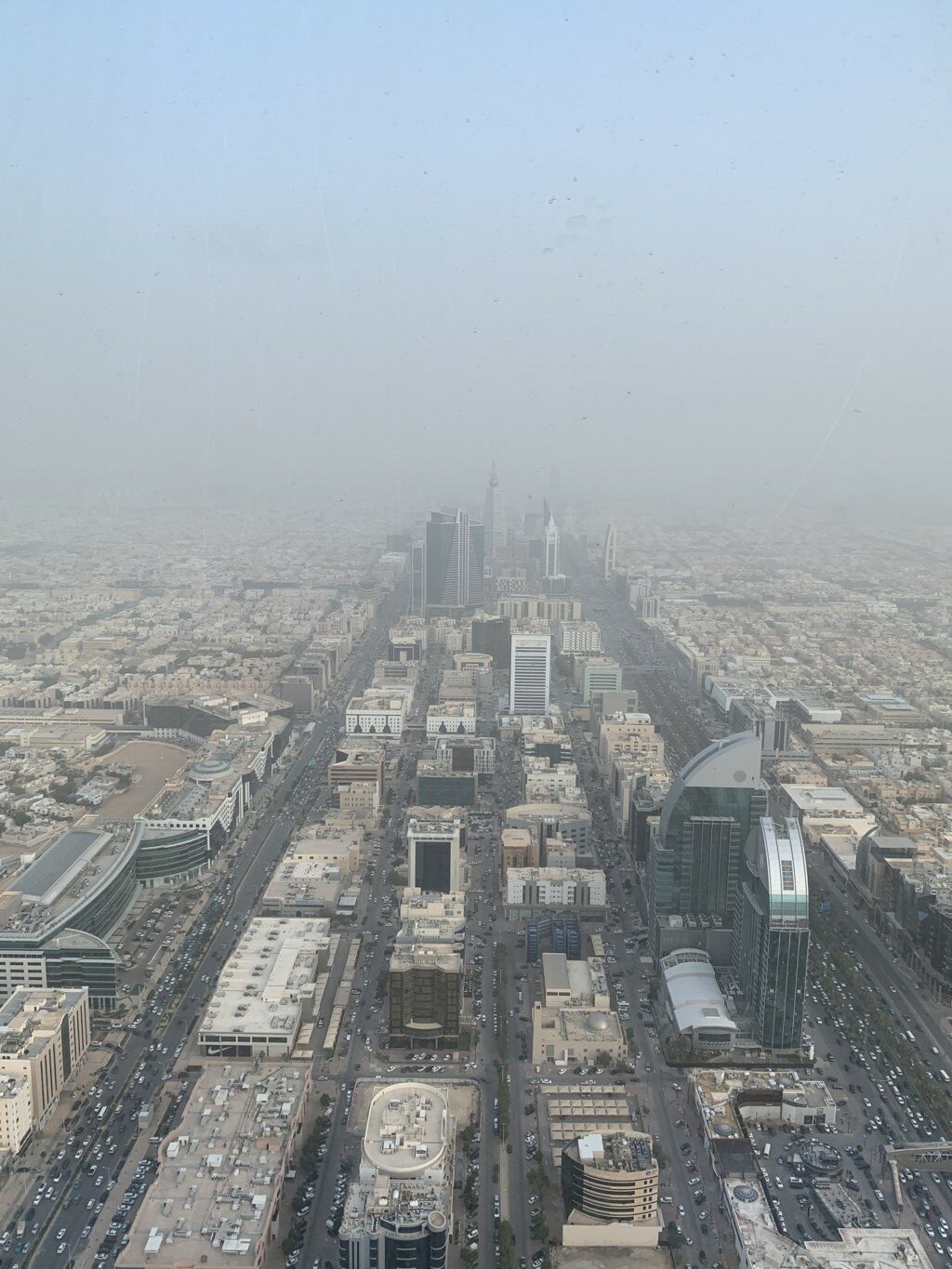
Jeddah
During my stay in Jeddah, I chose to stay in the Al-Hamra district. It’s a lively area with a convenient location, offering plenty of restaurants and supermarkets. However, if I were to visit again, I might opt for accommodations further north along the Jeddah Corniche. The Corniche is a beautiful boardwalk that truly comes alive at night, which offers a more relaxed and scenic experience.
- Luxury:
- The Ritz-Carlton Jeddah: Located in the Al-Hamra district, the Ritz-Carlton is like a massive palace in Jeddah. The brand is well-known and offers luxurious rooms, stunning views of the Red Sea, fine dining, and exceptional service.
- Shangri-La Jeddah: A 5-star hotel with a beautiful waterfront location on the Jeddah Corniche, with a gorgeous infinity pool, luxurious rooms, and a spa.
- Mid-Range:
- Abela Al Hamra – Palestine Street: A comfortable hotel with large rooms located in on the Palestine street in the Al-Hamra district, with easy access to restaurants and supermarkets. No breakfast included.
- Rahhal AlBahr Serviced Apartments: Serviced apartments also well-located in the Al-Hamra district. Large rooms with a kitchenette. Reasonably priced.
- Budget:
- Ibis Jeddah City Center: A budget-friendly option with breakfast included. The only downside that is the location not the best (in my opinion), its not located near Al-Hamra or the Jeddah Corniche so you will need to take a taxi if you want to go anywhere.

When to Go
- Winter (November to February): This is the best time to visit Saudi Arabia, with mild temperatures and pleasant weather, ideal for exploring cities, deserts, and cultural sites.
- Spring (March to May): A good time for visiting as temperatures are still moderate, especially in the mountainous regions and coastal areas. Best to go in March in April, in May temperatures start to rise. I visited Saudi Arabia in May and I can say that it was way too hot for me to feel comfortable.
- Summer (June to August): The summer months can be extremely hot, particularly in Riyadh which is located in the middle of the desert. Although the climate can be cooler in the Asir mountains, it is best to avoid Saudi Arabia during this time.
- Autumn (September to October): Autumn offers a pleasant climate, making it a great time for outdoor activities and exploring the country’s natural beauty. Expect lower temperatures than in summer, but still high.
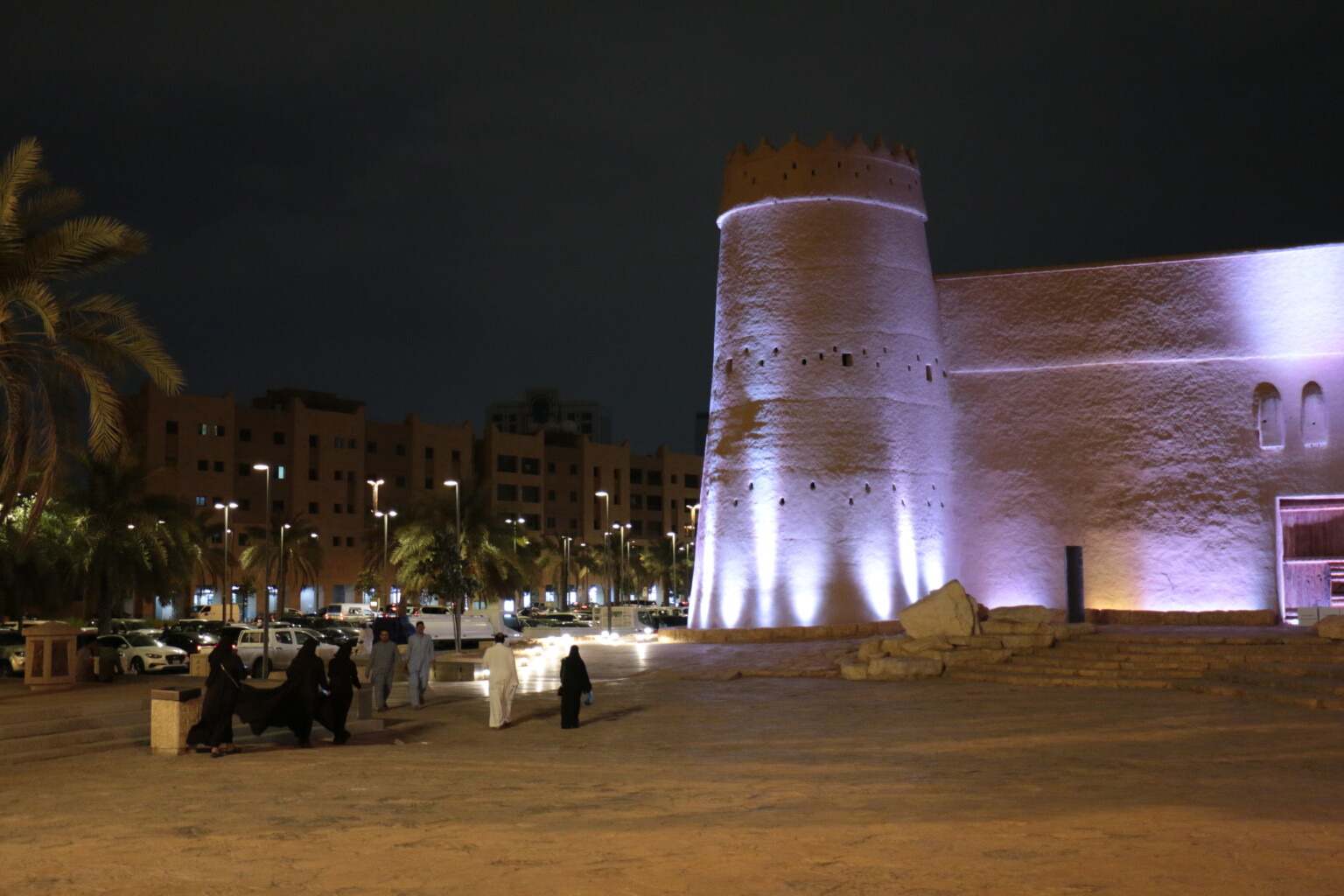
How to Get Around
- Public Transport: The public transportation system within cities generally needs improvement. In Riyadh, the metro system is still under development but shows great promise for the future. The bus system within Riyadh is affordable, with fares typically costing around 4 SAR for a one-way ride and 20 SAR for a 3-day pass. However, it currently does not cover all areas of the city. On the other hand, intercity buses are both reliable and comfortable. I recently took a bus from Riyadh to Dammam, and the 4-hour journey was exceptionally comfortable.
- Car Rental: Renting a car is a convenient way to explore the country, especially for visiting more remote areas. Daily rental rates range from 150-300 SAR, with relatively inexpensive fuel.
- Taxis and Ride-Sharing: Taxis are readily available in cities, and ride-sharing apps like Uber and Careem are widely used. Taxis start at around 10 SAR, with additional charges per kilometer.
- Domestic Flights: Given the size of the country, domestic flights are a popular option for long-distance travel. Saudi Airlines and Flynas offer frequent flights between major cities. I flew between Jeddah and Riyadh which is inexpensive, costing around 50€ for a one-way ticket.
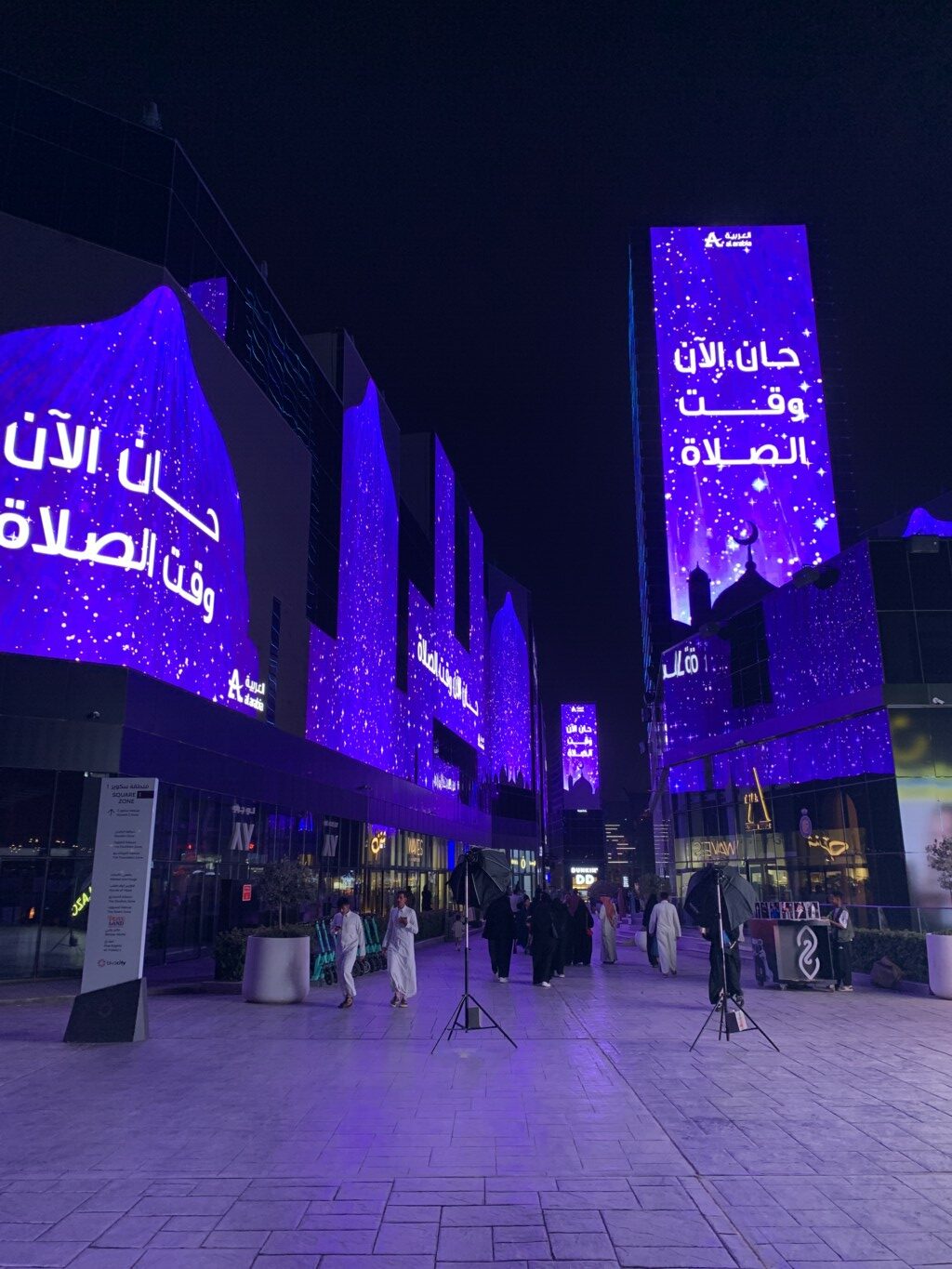
Safety
One of the question, I got a lot before visiting Saudi Arabia was: is it safe! After visiting the country I can safely say that, yes it is very safe to visit Saudi Arabia! The country has low crime rate and strict law enforcement, and not once did I feel unsafe in the country, despite walking streets in the middle of the night. However there are a few tips to keep in mind when visiting Saudi Arabia:
- Cultural Respect: Respect local customs and dress modestly, especially in more conservative areas. Women are advised to wear an abaya (a long black cloak) in public, though covering the hair is no longer mandatory. I, as a man for instance, always wore long pants despite it being 40 degrees (celsius) outside. I could probably have worn shorts, but it would have felt out of place, as it’s uncommon to see others dressed that way.
- Tap Water: Although authorities claim that tap water is safe to drink in major cities, I would personally avoid it, bottled water is literally everywhere and also cheap.
Travel Resources
- Flight Bookings: Skyscanner
- Hotel Reservations: Booking.com
- Car Rentals: Rentalcars.com
- Travel Insurance: World Nomads
- Local Tours and Experiences: GetYourGuide

